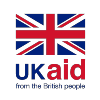Progress towards the UN global goal to ‘eliminate child labour in all its forms by 2025’ will not be made in countries with a significant child labour problem unless attention is focused on where the most dangerous forms exist – small businesses in the informal sector. This is based on research from the new ‘Small Business of Child Labour’ campaign led by the Child Labour Action Research programme (CLARISSA), which has documented the widespread use of children as young as six years old working in Bangladesh and as young as eleven in Nepal.
Launching on the 10th of November with 10 days of action, the campaign is calling for governments, civil society organisations and international agencies to shift international and national policies and interventions to focus on the prevalence of worst forms of child labour within small businesses (mostly in the informal sector).
Child labour in Bangladesh and Nepal
Based on testimonies from nearly 200 children working in the adult entertainment sector in Nepal, many find work within informal and unregulated venues, like dohori restaurants, massage parlours and dance bars. To reduce COVID19 transmission the Nepali government forced the Adult Entertainment Sector to completely close for almost a year in total (April-December 2020 and April to July 2021). However, many activities continued undetected, leaving children without any protection at all.
The leather industry is a major employer in Bangladesh. Through the research and the documentation of life stories with children, it is evident that there are thousands of small businesses that exist within the informal leather supply chain and children are often required to undertake dangerous work. At the start of the pandemic, the leather sector faced huge difficulties with lockdowns causing the closure of most factories and workplaces for three months. This left children in the leather sector without work and pushed families into crisis, with reduced income impacting their ability to buy food and pay rent.
Hearing from the children
*Rita is 18 years old (adult entertainment sector in Nepal): “One day the owner told me to drink, and I got drunk. There were a lot of people. One of them took me inside and offered me beer. “Let’s go outside somewhere to a guest house. Nothing will happen.” He also wanted to have sex with me. He offered me around 6000 rupees. I was angry and felt like beating him.”
*Pavel is 15 years old (leather sector in Bangladesh): “My father helped me find the job. Now, I do lots of works; like dyeing, drying, placing the leathers in the big drum, bringing dye or oil, using medicines etc. But the process of using acid has to be done under the supervision of seniors. I do whatever my company tells me to do. At work, I get many cuts and wounds because of carrying heavy goods on head, often I suffer from shoulder ache. This is a risky job. I need to process the leather; after that need to carry the processed leather on my head to load the vehicle with leather. Each day I need to work for two to three hours under the direct sun. I do not feel uncomfortable due to the smell of leather. Medicines reduce the smell of leather. These leathers are used for making jackets.”
Commenting on the campaign, Sudhir Malla, Country Coordinator for CLARISSA Nepal, “While Nepal has an extensive albeit incomplete legislative framework that theoretically protects children from the ‘worst forms of child labour’ it fails to respond to the needs children working in the unregulated informal sector.
Yet, as we have seen during the pandemic, simplistic responses like shutting down sectors can expose children to greater harm as it does not eradicate the reasons why children end up working in exploitative environments. Children only engage in the worst forms of child labour when they have no other choice – for example, if their parents can’t work, or they need to buy food.
As well as working with children to understand the complex reasons why they engage in the worst forms of child labour, progress can be made by listening to the voices of the small business community to understand the best levers and biggest constraints for meaningful and tangible change.”
Pia MacRae, Chief Executive Officer of CLARISSA partner, Consortium for Street Children said: “To have the maximum impact in terms of reducing immediate harm to children, we must have a very strong focus on children in the worst forms of child labour, typically in small and medium enterprises, especially in the informal, unregulated sectors.
Global brands, the visible parts of their supply chains, and governments are often prioritised in conversations about how to address child labour. Yet, millions of working children are caught in hidden and invisible spaces, often within small businesses mostly in the informal, sector. Dealing with the informal sector is a far more complex challenge than engaging with a handful of large exporters, yet it is essential as this is where the most exploitative and dangerous forms of child labour are found.
By listening to children and raising awareness with their employers there may be immediate, and low-cost actions that can be taken to reduce the risk to them, for example, creating a safer, healthier working environment.”
How can you get involved?
CLARISSA is inviting international agencies, CSOs and governments to get involved with the Small Business of Child Labour campaign on Twitter and join the 10 Days of Action from 10th November using #ShiftTheFocus. Following the social media launch, the campaign will convene a series of dialogues at country level with CSOs and government actors, leading to a global roundtable event on the World Day Against Child Labour in June 2022.
